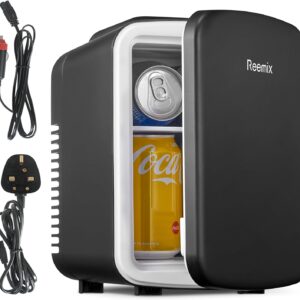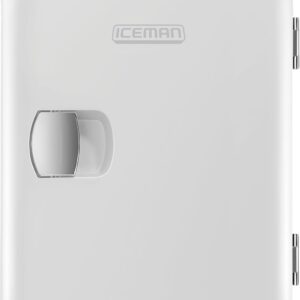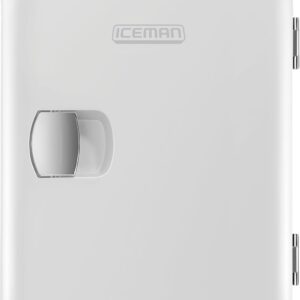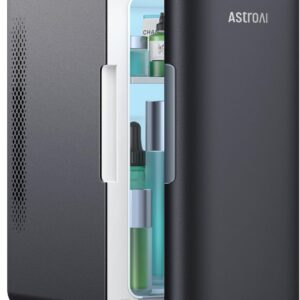How a lot does a DIY van conversion value?
DIY van conversion value wherever between $4,000 and $90,000.
It is determined by the scale of your van, the supplies you employ, the gadgets you embrace in your flooring plan and the gear you put in. A sensible DIY van conversion like this one by Ladi & Margaret can value as little as $6,000.
Protecting the entire rig easy and sensible is not going to solely aid you hit the highway sooner, however it is going to additionally decrease prices considerably.
1-week van conversion plan
Let’s get began with this 1-week van conversion.
Day 1
Day 1 is all about getting the van able to get insulated. We suggest finishing day 1 quite a bit sooner than days 2 to 7 as a result of it provides you with time to plan your construct in additional element.
On day 1 you’ll:
- Take away the bulkhead
- Intestine and clear the van
- Measure the inside area of the automobile
- Design a flooring plan
- Set up a roof fan.
First, intestine the automobile so you may clear the steel flooring, partitions and ceiling. Eradicating the bulkhead will permit much more pure mild into the van. That is a type of enjoyable jobs you are able to do whereas listening to your favourite music.
As soon as the van is clear, you may take measurements. Take every measurement 3 times to verify it’s correct and make notes. Subsequent, design your format based mostly in your wants and preferences. Don’t overlook to maintain it plain.
Putting in a roof fan in your van
Now that you realize the place the furnishings will likely be it’s time to chop a gap within the roof. Scary however important. With out satisfactory air flow, your van will entice quite a lot of moisture, smells and mildew. Getting a gradual circulate of contemporary air may even assist regulate the temperature.
Right here’s how one can get it completed:
- Lay some outdated blankets on the van flooring to gather the steel shavings and tape any magnetic surfaces
- Take measurements for the fan on the roof and draw its form
- Drill pilot holes within the corners of your drawing – these have to be large enough to suit your noticed blade
- Minimize alongside the strains utilizing a jigsaw
- File down the steel edge to make it easy utilizing a steel file and sandpaper
- Paint all alongside the minimize to maintain rust at bay
- Apply loads of waterproof sealant to the world across the minimize
- Add Butyl tape to get a stronger seal
- Press and screw the fan flange into the roof
- Screw the fan into the flange
- Apply caulking to all screws to verify the entire space is waterproof
- Check for leaks utilizing a water hose or a bucket.
Day 2 and three
Days 2 and three are more difficult, particularly in the event you personal a much bigger van. You’ll have to work quick and effectively. If in case you have a buddy who owes you one, that is the time to name them up.
On days 2 and three you’ll:
You could be tempted to skip the insulation step in the event you’re in a rush, however you shouldn’t. You received’t have a second likelihood to get it completed with out taking the whole lot out of your van, together with the ground and partitions. And that’s a colossal ache.
Whilst you can simply make do with out {an electrical} or plumbing system for some time, you’ll doubtless remorse not insulating your van. The warmth and chilly will journey via the steel physique and make the inside of your private home on wheels uncomfortable, regardless of the season.
Insulating the van flooring
To insulate the roof of the van:
- Measure the area between the ribs
- Minimize foam boards to suit between the ribs (don’t overlook to make use of a masks)
- Place the boards between the ribs and repair them in place utilizing Duct tape.
Insulating the van partitions
To insulate the partitions:
- Minimize metallic bubble wrap insulation like Reflectix or Thinsulate to dimension to suit totally different areas of the physique
- Use spray glue to repair it in place and canopy as a lot of the partitions as you may
- Minimize fiberglass insulation to cowl all of the bubble wrap (bear in mind to put on a masks and gloves)
- Use Duct tape to repair it in place, the place vital
- Use foam insulation the place you may’t repair the opposite sorts of insulation, however cowl solely 50% of the gaps (foam expands).
Insulating the van flooring
As soon as the partitions are insulated you may insulate the ground. We wrote an entire article about this right here.
To offer you a fast abstract, you’ll have to:
- Lay strips of insulation on the steel flooring
- Minimize and glue picket furring beams to the ground utilizing Sikaflex
- Minimize and place foam board insulation between the beams (don’t overlook to make use of a masks).
Day 4
Issues will nonetheless look messy on day 4, however we promise it is going to be value it.
On day 4 you’ll:
- Construct a subfloor
- Set up strapping
- Arrange a easy electrical system.
As soon as the insulation is dry you may construct a subfloor. To do that, merely minimize 1/2 plywood sheets to suit between the beams you put in yesterday. Screw these to the beams. Et voila; you’ve a subfloor.
Now you may set up strapping onto the partitions and roof. Determine the place you need the picket furring to run so you may simply connect furnishings to it later. Connect the strapping to the partitions and roof utilizing self-tapping screws.
Electrics
You’re now prepared to put in a easy electrical system across the strapping. If you wish to preserve your construct time to round per week you’ll have to purchase {an electrical} package. These are pre-designed electrical methods that include all of the components you want – together with cables, lugs, fuses and fuse holders – in addition to detailed directions. They take all of the headache (and far of the time) out of putting in {an electrical} system DIY. You’ll be able to all the time improve your system with photo voltaic charging later.
When you’d quite skip putting in {an electrical} system since you don’t really feel assured in your abilities, you may get a transportable energy station that fees when you drive, like a Jackery. You’ll be able to set up the electrics later. To cover them from view, match them inside furnishings and glue wire covers to the partitions or flooring the place wanted.
Day 5
After day 5 your panel van will begin to appear like a camper.
On day 5 you’ll:
- Set up the completed partitions, ceiling and flooring
- Add lighting and charging ports.
Subsequent up is becoming the partitions, ceiling and flooring. Select the best and quickest materials that will get the job completed to save lots of time. For the ceiling and partitions, you could possibly use ACP or cladding, whereas for the ground you could possibly go for sheet vinyl. Observe the directions offered by the producer or discover a how-to video on-line.
As you lay the partitions, be certain that to chop holes the place you need your lights and charging ports to be. To put in these, merely screw them in place and join them to {the electrical} system.
Day 6
Day 6 is all about making your flooring plan come to life.
On day 6 you’ll:
- Assemble and set up conversion kits.
If you wish to construct all of the furnishings in a day you will want to purchase conversion kits; there’s no manner round it. Constructing a mattress, sofa and kitchen from scratch sometimes takes not less than three days and many mind energy. Observe the producer’s directions to assemble and match the kits to your van.
The Van2b camper van beds take 3 to 4 hours to construct and set up. Its form adapts completely to the Sprinter, Transit, and ProMaster.
Day 7
Almost there! Yet one more work day and also you’ll be able to hit the highway.
On day 7 you’ll:
- Add easy plumbing to the kitchen
- Set up a heater
- Make cushions for the sofa
- Minimize a mattress to suit the mattress
- Add a privateness curtain.
When you purchased a kitchen conversion package, it might have include plumbing put in. If that’s your case, you may skip this step.
To create a easy water system you’ll have to:
- Set up two tanks (one for freshwater, one for grey water) in one in every of your kitchen cupboards
- Measure the sink and tap and draw them on the countertop
- Minimize two holes to deal with the sink and tap
- Set up a water pump – in the event you didn’t set up electrics select a guide pump
- Join the pump to {the electrical} system, if you’ll want to
- Seal the holes and mattress the sink and tap
- Join the sink to the grey water tank
- Join the freshwater tank to the pump and tap.
To attach all of the parts use versatile pipes, connectors and reducers. It will probably take some time to determine what you want, so we suggest figuring the connections out earlier than you go forward with the construct.
Et voila. You now have a easy plumbing system on board. You’ll have to disconnect the tanks for emptying and filling each few days. Keep in mind to not drink the water, because it’s not filtered.
Putting in a diesel heater in a van
Now is an efficient time to put in a heater.
Usually, to put in a diesel heater you will want to:
- Select the place to mount the heater, like below the passenger seat, and clear the world
- Measure the ducting, gas strains and wiring
- Map out the fittings and adapters that include the product you selected
- Drill a gap within the flooring for the strains to journey to the again of the van – drill a pilot gap first to verify the placement works
- Set up the gas tank, gas pump, exhaust ducting and gas line
- Join all of them
- Match the heater within the spot you selected on an insulated base, like some ply wrapped in foil
- Feed the strains via the ground to the underside of the van
- Run the wires from the management panel and gas pump to the fuse panel
- Check if the lights come on
- Drill a vent gap as shut as attainable to the heater so the nice and cozy air can journey via the vanFasten the consumption and exhaust hoses below the van, 3ft aside
- Set up a carbon monoxide detector.
Please keep in mind that this listing is just not complete – you’ll want to fastidiously comply with the producer’s directions and be sure to fulfill all their necessities. There are many movies about how one can set up a diesel heater on a van, like this one.
Van cushions and mattress
Subsequent, you may take into consideration the cushions for the sofa and mattress. In case your mattress and sofa are commonplace sizes it can save you time by shopping for pre-made cushions and mattresses. In the event that they aren’t, you’ll want to get inventive.
We suggest shopping for high-density foam and slicing it to dimension utilizing an electrical carving knife. You’ll be able to then cowl it with material by making cushion covers or attaching the material to the froth with pins.
Van upholstery
Lastly, you may add a privateness curtain to your construct. Reasonably than spending a very long time creating custom-shaped covers which are awkward to take away and have to be saved away, set up a easy curtain between the cabin and the camper. Use blackout material, magnets, and a bungee wire to hold it up. Easy but efficient.
Are you able to convert your van right into a camper?
Choose the package you want:
Or try right here all our van conversion parts.
We make our mattress and cupboard items in California utilizing premium supplies and ship them free of charge to the Decrease 48.
For a extra detailed information to a extra complicated DIY camper van conversion, check out this article.
Trending Merchandise










